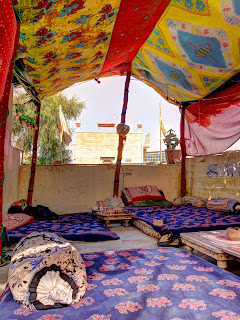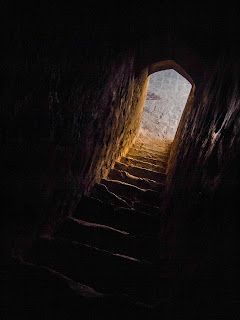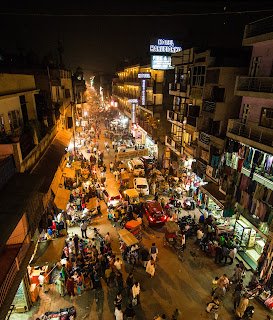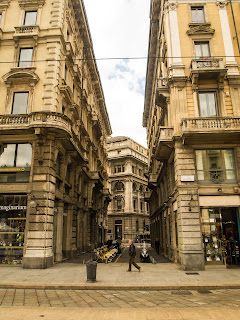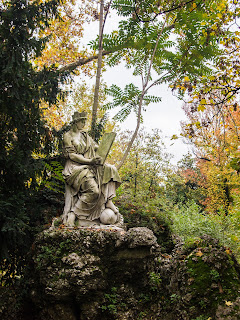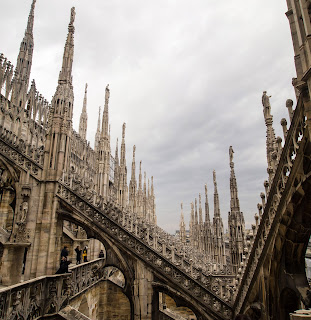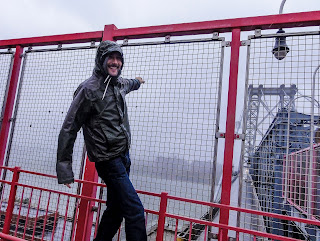In the farthest ends of Rajasthan’s deserts, a plateau
mounting fortress erupts from the otherwise flat and dusty sands. Jaisalmer glows like honey under the sun,
except for where tapestries of every color provide both shade and
vibrancy. With ancient streets even
better preserved than Jaipur, and happily devoid of its modernities, Jaisalmer
is a handsome old city with a charm that beckons you to get lost in its twisted
golden streets.
I spent my nights in Jaisalmer on a rooftop, under the
stars, between Bombay kids, French minstrels, tea, beer, and cocktails. My good humored Rajasthani hosts ran a new
guesthouse in this small city with the aim of creating an environment conductive
to “chillaxing” and I think they had succeeded supremely.
(I misspelled “chillaxing” and Microsoft Word corrected it,
making me both laugh aloud and feel suddenly anguished to see what level of
legitimacy the word might have)
Many centuries ago, Jain refugees brought money enough to create
layers of walls dimpled by hundreds of imposing bastions. Large stone balls till sit above the city
gate, waiting to be tossed upon the heads of would be conquerors. A feature typical of these desert fortresses,
there is but one way in and out, and it passes through a series of gates set
between 90 degree turns. These turns
prevent war elephants to build enough momentum to fulfill their function as
battering rams. Three times Jaisalmer
found itself outmatched under siege, prompting its defenders to enact the rite
of Johur. The city’s women would bathe, dress in their
finest saris, doll themselves up with makeup, and then surrender their earthly
bodies in a mass immolation. Once all
the women and children were burned to ashes, the men would open the gates and
attempt to take as many lives as possible before their own were forfeit.
Today the city’s under a new kind of siege. These distant invaders don themselves in many
pocketed cargo pants. They are adorned
with sun block and SLR cameras, and they brandish mighty copies of this year’s
Lonely Planet publication. Some business
owners in the walls of the fort say otherwise, but Indian conservationists warn
that the city is slowly collapsing in on itself, unable to withstand the burden
of modern water consumption with its archaic water management system.
Somewhere in the fortress I bumped into a London girl I
recognized from the hostel and joining forces we explored the palace and
admired the Jain temples and impressive haveli
mansions, with ornate stone divans hanging high above the streets so as to
escape the floating dust and noise of desert commerce. A full quarter of the city’s people reside
within the fort, and the fort’s walls and balconies offer inspiring views of
the remaining 75%.
Another common feature of modern Indian cities is their
ovular shapes. Widened main roads loop
around each city in the footprints of what were once the cities’ outer
walls. Only the gates remain, now
serving as focal points of traffic circles and proud testaments of the cities’
histories. Just outside Jaisalmer’s wall-turned-roads, the Londoner and I rented
paddle boats in the Gadi Sagar, a
lovely ghat lined resoirvoir full of catfish, water buffalo, and absurdly
ornate shrines. We finished just in time
to enjoy a traditional Rajasthani puppet show featuring tiny dancing camel
riders and reincarnating hermaphrodites set to the impressive eastern wailings
of a young boy and clacking castanet like blocks.
At night, more chillaxing.
Om, one of our hosts, entertains while cycling through his endearingly
off French, English, and American accents.
I win a lot of points with the music snobs for knowing or playing Mulatu
Astatke, Thomas Fersen, Los Saicos (thanks Sean Bernhoft), and David Axelrod
(thanks Jenny Long). (All of those
artists are amazing – go listen to them)
The Bombay kids come back early from a desert music festival/dance party
that apparently wasn’t any good. There’s
chess, pastries, and Indian rum.
To better escape the city, a jeep takes you maybe halfway to the Pakistan border and you meet your camels there. Mine was named Alex. I don't think you properly realize how much larger camels are than horses until you hop on one and hold on as it unfolds itself into upright position, lurching you forward and then back with violent shudders.
There was only one other westerner, a Nuremberg German named Hannes. Single file we were led through the desert.
Right from the beginning we disturbed an antelope, which took flight until it was indistinguishable from the desert's palette. This sandy patch of Rajasthan was surprisingly abundant with wildlife. Black desert beetles left unceasing trails of pin prick ribbons in the sand. As we startled the air while passing these softly green and white bristled bushes, dozens of white butterflies set sail into the air as if the leaves of the bush had suddenly come to life.
I breathed in the stillness, the quiet calm I haven't sensed since leaving home, or even well before that. An almost startling contrast to the everyday chaos of Indian city life, I could really understand why the desert calls people.
The shrubbery became increasingly sparse until there were none left to compete with the undulating hills of sand: the dunes we had ultimately been aiming for. The score of Laurence of Arabia dimmed to silence as we parked our camels.
The German was to stay the night, so we were urged to explore on foot and then collect firewood while our guide took his camels to water.
Given the brevity of our trek, the ground we covered was likely the ground most covered, and there was plenty of evidence of other visitors: ashen fire pits, occasional 650 ml bottles of Kingfisher beer, and a scarcity of beautifully untouched waves of sand. And occasionally, on the horizon, we could make out the silhouettes of other camel riders. They never got close enough to be made out and I let my mind fill in the blanks with the faces of spice merchants and young princes making dusky escapes to the distant mansions of secret lovers.
The shadows between ridges of sand grew deeper as the sun nestled into Pakistan, and reluctantly, I left Jaisalmer.
